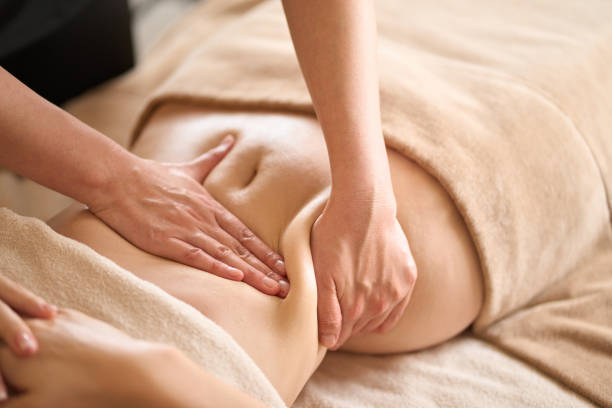Lymphatic Drainage Massage: The Hidden Key to Wellness
The human body is a marvel of interconnected systems, each playing a crucial role in maintaining overall health and vitality. Among these intricate networks, the lymphatic system stands out as an unsung hero, quietly working behind the scenes to support our immune function, remove toxins, and maintain fluid balance. In recent years, a growing trend has emerged in the beauty and wellness industry that seeks to optimize this vital system: lymphatic drainage massage. This innovative technique, once relegated to medical settings, has now found its way into spas, fitness centers, and home care routines, promising a myriad of benefits for both health and appearance. As we delve into the world of lymphatic drainage massage, we'll explore its origins, techniques, and the scientific evidence behind its purported effects, shedding light on why this centuries-old practice is experiencing a modern renaissance.

Lymph nodes, small bean-shaped structures scattered throughout the body, act as filters for harmful substances and house immune cells that fight infections. When the lymphatic system becomes sluggish or congested, it can lead to a host of issues, including swelling, poor immune function, and even cellulite formation.
The Origins of Lymphatic Drainage Massage
Lymphatic drainage massage, also known as manual lymphatic drainage (MLD), has its roots in the early 20th century. Danish doctors Emil and Estrid Vodder developed the technique in the 1930s while treating patients with chronic colds and sinus infections. They noticed that many of these patients had swollen lymph nodes and theorized that stimulating the lymphatic system could improve overall health.
The Vodders refined their technique over the years, creating a gentle, rhythmic massage method that follows the natural flow of the lymphatic system. Their work laid the foundation for what would become a widely recognized therapeutic approach in both medical and wellness settings.
Techniques and Application
Lymphatic drainage massage is characterized by its light touch and specific movements. Unlike deep tissue massage, which targets muscles, MLD focuses on the skin’s surface, where many lymph vessels are located. The technique typically involves four basic strokes:
- Stationary circles: Small, gentle circular movements applied to specific areas
- Pump technique: Rhythmic pushing and releasing motions to stimulate lymph flow
- Scoop technique: Longer, sweeping movements to guide lymph towards drainage points
- Rotary technique: Spiral-like motions used on larger body areas
These strokes are applied in a specific sequence, starting from areas closest to the heart and moving outward. The goal is to stimulate the lymphatic system’s natural flow and encourage the movement of lymph fluid towards lymph nodes for filtering and eventual recirculation.
Benefits Beyond Beauty
While lymphatic drainage massage has gained popularity in the beauty world for its potential to reduce puffiness and improve skin appearance, its benefits extend far beyond cosmetic concerns. Research has shown that MLD can have significant positive impacts on various health conditions:
- Reducing edema: Studies have demonstrated the effectiveness of MLD in reducing swelling, particularly in post-surgical patients and those with lymphedema.
- Improving immune function: By stimulating lymph flow, MLD may help boost the body’s natural defense mechanisms.
- Enhancing detoxification: The technique can aid in removing metabolic waste and toxins from body tissues more efficiently.
- Alleviating chronic pain: Some research suggests that MLD may help reduce pain associated with conditions like fibromyalgia and chronic fatigue syndrome.
- Supporting digestive health: Gentle abdominal massage techniques can stimulate the gut-associated lymphoid tissue, potentially improving digestive function.
The Science Behind the Claims
As lymphatic drainage massage gains popularity, researchers are working to provide scientific evidence for its efficacy. While more studies are needed, existing research offers promising insights:
A 2015 study published in the Journal of Physical Therapy Science found that MLD significantly reduced swelling and improved range of motion in women who had undergone breast cancer surgery. Another study, published in the journal Lymphology in 2013, demonstrated that MLD could improve lymphatic function and reduce the risk of secondary lymphedema in breast cancer patients.
In the realm of sports medicine, a 2018 study in the Journal of Sport Rehabilitation showed that MLD could enhance recovery and reduce muscle damage after intense exercise. This finding has led some professional athletes and sports teams to incorporate lymphatic drainage techniques into their recovery protocols.
Incorporating Lymphatic Drainage into Wellness Routines
As awareness of lymphatic health grows, many individuals are seeking ways to incorporate lymphatic drainage techniques into their daily lives. While professional MLD sessions can be beneficial, there are also self-care practices that can support lymphatic function:
- Dry brushing: This technique involves gently brushing the skin with a soft-bristled brush, always moving towards the heart. It can stimulate lymph flow and exfoliate the skin.
- Self-massage: Simple massage techniques can be performed at home, focusing on areas like the neck, armpits, and groin where lymph nodes are concentrated.
- Hydration: Drinking plenty of water helps maintain optimal lymph fluid volume and flow.
- Exercise: Regular physical activity, especially activities that involve bouncing or jumping, can naturally stimulate lymph circulation.
- Contrast showers: Alternating between hot and cold water during showers can help stimulate lymphatic flow and improve circulation.
The Future of Lymphatic Health
As research continues to uncover the importance of lymphatic health, we can expect to see further innovations in this field. Some emerging trends include:
- Lymphatic-focused fitness classes: Specialized workouts designed to stimulate lymph flow through specific movements and breathing techniques.
- Wearable technology: Devices that use gentle compression or vibration to stimulate lymphatic circulation throughout the day.
- Lymph-supportive nutrition: Diets and supplements tailored to optimize lymphatic function and reduce inflammation.
- Integration with other therapies: Combining lymphatic drainage techniques with modalities like acupuncture or light therapy for enhanced results.
As our understanding of the lymphatic system deepens, so too does our appreciation for its role in overall health and wellness. Lymphatic drainage massage, once a niche therapy, is poised to become a cornerstone of holistic health practices, offering a gentle yet powerful approach to supporting the body’s natural detoxification and immune processes. By embracing this often-overlooked aspect of our physiology, we open the door to new possibilities in preventive health care and personal well-being.





